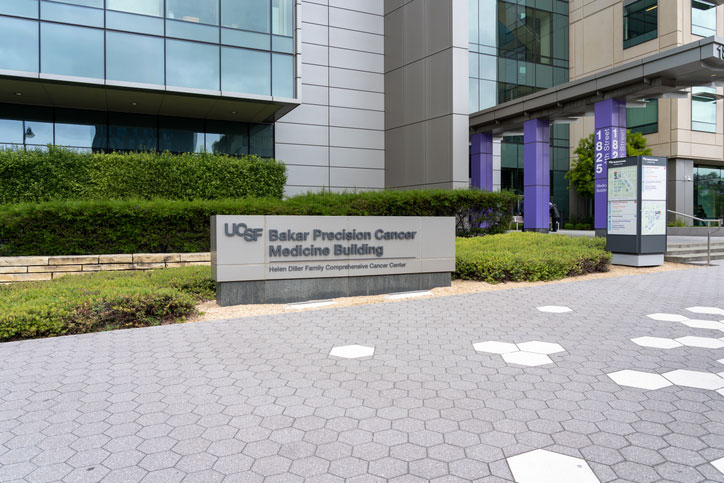Written by Helen Lewis

In the United States, the tides are turning in relation to open discussion of mental health and mental healthcare. Mental illness and its associated treatments, including medication, therapy, and institutional care, have long been seen as a source of shame and stigma, leaving many to feel that they had to suffer in silence, or avoid seeking help altogether. Over recent years, however, American culture has shifted to embrace open conversation around mental health, medication, therapy, and other forms of psychiatric care: a lifesaving development toward holistic well-being.
It is, perhaps, also no accident that discussions around mental health have become particularly relevant over the course of the last five years. According to the National Institute of Mental Health (NIMH), the COVID-19 pandemic and the SARS-CoV-2 virus itself have had a demonstrably significant impact on Americans’ mental health, with many residents reporting experiences of mental health challenges like anxiety, depression, and substance use disorder.
When it comes to providing meaningful mental healthcare to Americans, Psychiatric Mental Health Nurse Practitioners (PMHNPs) are essential to the strong, effective functioning of our country’s psychiatric health infrastructure.
The Role of Psychiatric-Mental Health Nurse Practitioners (PMHNPs)
Officially speaking, psychiatric-mental health nurse practitioners are specialized advanced practice registered nurses (APRNs).
PMHNPs work to provide holistic care for patients of all ages, from children to seniors. These medical practitioners are trained to conduct psychiatric assessments, provide therapy, and even prescribe medication and develop treatment plans for a wide range of psychiatric illnesses, including schizophrenia, anxiety, depression, post-traumatic stress disorder (PTSD), and bipolar disorder.
Though PMHNPs are trained to focus on mental health, they’re also able to conduct physical assessments to determine whether patients may have any underlying medical conditions that might be contributing to their current mental state.
What’s the Difference Between a PMHNP and a Psychiatrist?
One of the primary distinctions between a psychiatric-mental health nurse practitioner and a psychiatrist is their level of education and training.
Broadly speaking, PMHNPs start their career as registered nurses (RNs) before pursuing higher-level degrees as a Master of Science in Nursing (MSN) or Doctor of Nursing Practice (DNP). These graduate studies typically take two to four years. Upon completion, trained nurse practitioners then must pass a certification exam administered by the American Nurses Credentialing Center (ANCC).
In contrast, psychiatrists are medical doctors (MDs). They have usually spent four years in medical school, which is generally followed by a four-year residency program in psychiatry.
Unlike registered nurses, MDs develop an expertise in medical areas related to psychiatry like neurology, general medicine, and human biology. As a result, MDs have a broader understanding of the biomedical elements of mental illness.
Because of these differentiations, different states have different rules in relation to how much leeway PHMNPs have when it comes to prescribing medications. In some states, these advanced nurse practitioners are required to develop these prescriptions in collaboration with an MD – meaning that they can prescribe medication, but not independently.
Interestingly, some patients may prefer to meet with PHMNPs over psychiatrists.
One significant contributing factor is availability: PHMNPs might have more flexible schedules, which could be particularly beneficial in rural or otherwise underserved areas. It is also possible that appointments with PMHNPs are generally more affordable than consultations with psychiatrists.
Work Settings and Responsibilities

Because mental healthcare can take a wide variety of forms, PMHNPs have the opportunity to work in a range of clinical settings, including:
- Hospitals, including inpatient psychiatric units (i.e., in the event of emergency mental health crises, such as violent behavior or suicide attempts) and general hospital units
- Outpatient clinics and private practice
- Long-term care and geriatric facilities
- Community mental health centers
- Substance use and addiction treatment facilities
- Correctional facilities
- Schools and universities
- Veteran Affairs (VA) and military settings
- Research and academia
As is likely already clear, being a PMHNP is a wonderfully versatile job title; a field that enables senior-level nurses to put their skills to use in a large range of contexts and environments.
For mental health nurse practitioners who are particularly interested in social justice and interpersonal work like therapy, working in the correctional system could be particularly meaningful work. For others who may be more drawn toward working with people in addiction recovery, PMHNPs in addiction rehabilitation facilities can develop skills to treat detoxification and symptoms of substance withdrawal.
Does Remote Work Exist in Psychiatric Mental Healthcare?
In short: yes!
The field of telehealth is rapidly growing in the healthcare sector, particularly after the beginning of the COVID-19 pandemic. Telehealth offers a meaningful way to expand access to healthcare for underserved communities, including people with disabilities and people living in rural, or difficult to reach, areas.
Using video conferencing platforms, qualified PMHNPs are able to do work like conducting mental health evaluations, provide therapy, and help patients manage their medication. New technologies are also helping nurses provide this care by being able to access patients’ electronic health records (EHRs) from anywhere.
Education and Certification Requirements in California to Become a PMHNP
Though the journey toward achieving this certification can take a number of years and hard work, the job itself has the opportunity to not only be personally meaningful but also a strong financial decision.
The first step is to complete a Bachelor of Science in Nursing. Upon completion of this degree, nurses-to-be must pass an official licensing exam known as the NCLEX-RN (National Council Licensure Examination for Registered Nurses). Upon passing this exam, nurses receive an official license and are officially able to call themselves registered nurses (RNs).
Some nurses choose to finish their studies at this phase of the process. While RNs play an essential role in American healthcare infrastructure, this license itself is not sufficient to become a PMHNP.
In order to pursue any advanced-level specialization in nursing – including in the psychiatric-mental health field – graduate school is essential. As of September 2024, aspiring nurses have the choice to pursue either a Master of Science in Nursing (MSN), a degree that takes two to three years to complete, or a Doctor of Nursing Practice (DNP), a degree that takes three to four years to complete.
These programs typically include a mandatory number of clinical practicum hours, opportunities for ambitious nurses to get hands-on experience in medical settings. DNP and MSN candidates are usually required to complete between 500 and 700 hours of fieldwork as part of their degree work, but PMHNP students may need to finish more: some programs expect PMHNP candidates to have 1,000 to 1,200 hours of clinical practice before graduation.
Upon graduating from these programs, nurses then have to apply for a nurse practitioner (NP) license through the California Board of Registered Nursing (BRN). Determined nurse practitioners must then also pass a national certification exam specifically for aspiring psychiatric-mental health nurse practitioners.
Finally, after receiving their NP license, PMNHPs need to apply for what is known as a furnishing number and possibly also a DEA registration to prescribe medications to patients.
Trending Towards the DNP Degree
For decades, two leading bodies in nursing – the American Association of Colleges of Nursing (AACN) and the National Organization of Nurse Practitioner Faculties (NONPF) – have been working to make the DNP degree the standard level of certification for aspiring senior-level nurses.
Today, these organizations have stated that they hope to replace the MSN with the DNP degree by 2025. In fact, some programs have already transitioned graduate-level nursing students from MSN to DNP programs in order to seamlessly move them to this more standardized title.
Beyond the clerical, however, there are a number of material and meaningful ways in which a DNP degree would be beneficial to nurses hoping to find work in senior-level and leadership roles. DNPs typically earn higher salaries and have greater opportunities than lower-level nurses, benefits that can come with more respect and recognition from peers throughout their field. This pathway is optimal for ambitious nurses eager to make a great income in California, a state where DNPs are able to earn particularly high incomes.
DNP Program Structures and Curriculum
In the United States, DNP programs are structured around 8 essentials articulated by the American Association of Colleges of Nursing (AACN). These are:
- Scientific Underpinnings for Practice
- Organizational and Systems Leadership for Quality Improvement and Systems Thinking
- Clinical Scholarship and Analytical Methods for Evidence-Based Practice
- Information Systems/Technology and Patient Care Technology for the Improvement and Transformation of Health Care
- Health Care Policy for Advocacy in Health Care
- Interprofessional Collaboration for Improving Patient and Population Health Outcomes
- Clinical Prevention and Population Health for Improving the Nation’s Health
- Advanced Nursing Practice
DNP programs may vary slightly depending on the level of education the nursing student has prior to entering a program: a nursing student with a BSN will usually need three to four years to graduate with a DNP, while nurses with MSN degrees will need two to three years to complete DNP programs.

Either way, nurses pursuing a DNP, regardless of whether or not they choose a specialization, will likely be enrolled in a core curriculum that touches on topics like evidence-based practice, healthcare policy, pathophysiology, and pharmacology.
Nurses who are specifically aiming to become PMHNPs will likely complete courses that focus on subjects like psychopharmacology, cognitive behavioral therapy (CBT), and psychiatric diagnosis. These programs will provide aspiring nurse practitioners with the skills they need to treat patients of all ages, ranging from children to seniors.
PMHNP Residency Programs in California
There are a number of respected PMHNP residency programs in California for senior-level nurses hoping to work in mental healthcare. These residencies are usually 12 months long, and exist to help aspiring nurses develop expertise, clinical skills, and confidence, particularly when it comes to treating more complex cases.
Some residencies blend hands-on medical practice with expanded dialectical training and education in the field of psychiatric nursing.
Some notable programs in California include:
- UC Davis Betty Irene Moore School of Nursing: Focuses on expanding access to medical care in underserved communities.
- Santa Rosa Community Health PMHNP Residency: Also focuses on supporting underserved communities, with a special emphasis on substance use disorders; intellectual and developmental disabilities; and integrated behavioral health.
- VA Greater Los Angeles Healthcare System: Focuses on treating veterans, with aspects like street medicine and integrated care.
- VA Northern California Health Care System: Also focused on providing care for veterans, this program provides both inpatient and outpatient treatments.
Salary Expectations for Aspiring PMHNPs in California
According to the Bureau of Labor Statistics, nurse practitioners in California can earn, on average, close to $162,000 annually, or almost $80 an hour.
This is considerably higher than in other states: as of 2023, California is the highest-paying state for qualified nurse practitioners. Nevada came in a distant second, with an average annual salary of $148,670 – a difference of some $12,870 per year. The next three highest-paying states (Washington, New Jersey, and Oregon) also hover around $145,000. However, it’s important to note that the cost of living in California is also higher than in many other states.
2023 US Bureau of Labor Statistics salary and employment figures reflect state data, not school-specific information. Conditions in your area may vary. Data accessed September 2024.
